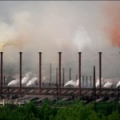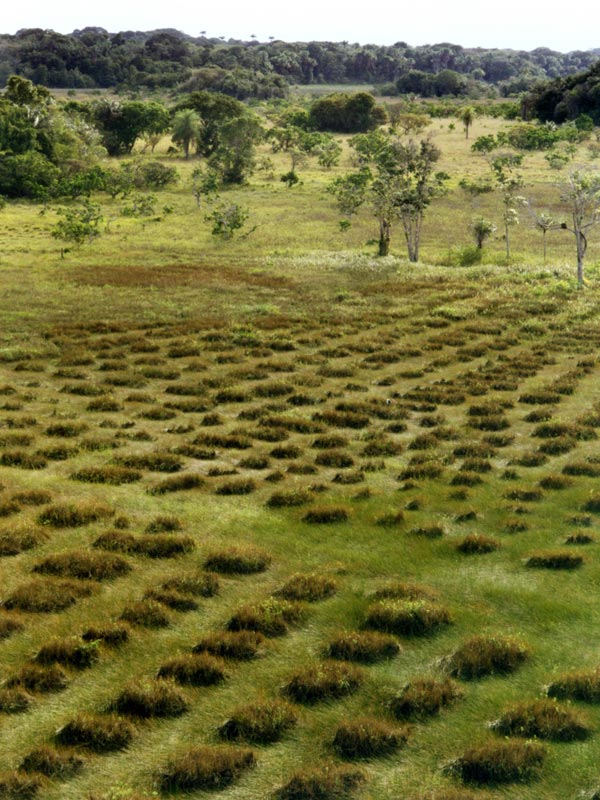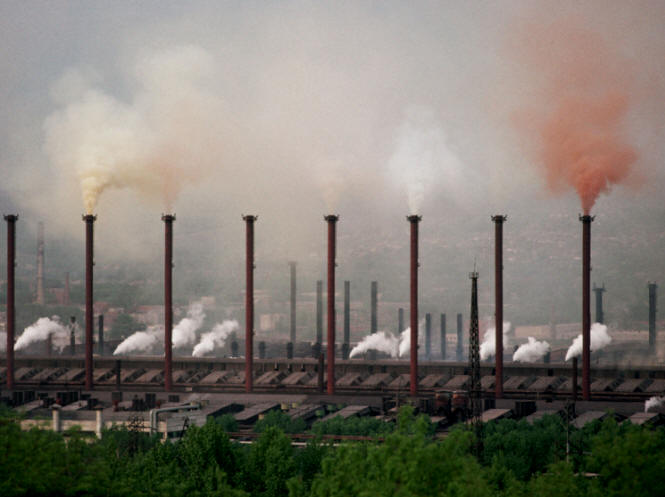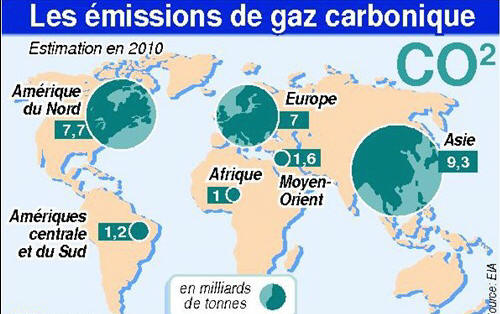

To take as a starting point the last agricultural techniques..and save the Planet Earth
To take as a starting point the last agricultural techniques: example of a “durable” ecosystem in Guyana
Guianese coastal savannas which are enamelled small hillocks have just delivered part of their secrecies thanks to work from an interdisciplinary and European collaboration. The scientists discovered that these vestiges of an agricultural system précolombien were built there is nearly 900 years. Especially, they highlighted that these small islands drained well in a medium seasonally flooded were invested by other organizations (animal and plants) which maintain still today the building in relief. This example of landscape modelled by the Man then maintained by Nature could be used to imagine intensive systems of agriculture “ecologically”.
The littoral of the Guianese plate, with the island of Cayenne until Guyana, is strewn with small hillocks, which one could take for banal lumps of earth. Is the origin of these buildings natural? For the inhabitants of the surroundings, their origin is mysterious and of many explanations circulate. Some affirm, for example, that these hillocks are related to the repeated passage of bovines in these marshy savannas. However, of the archaeological studies led to the end of the Eighties revealed that these structures were the fruit of the human hand.
How fields built by Amerindians précolombiens and given up for the majority about 1250, before the arrival of Europeans, could persist until our days? They should have disappeared because of erosion, of the rains, the fires and the vegetable rehandlings. An interdisciplinary research team tries, since 2007, to answer this question. While being pressed on a large range of expertises (archeobotanic, archaeology, paleoecology, sciences of the ground, ecology and air imagery), the scientists sought to include/understand how the last action of the Man on these landscapes could modulate the current operation of the ecosystem.
Fields designed and exploited between year 650 and the year 1250
This study confirms first of all that farmers précolombiens built these vast complexes of fields raised within Guianese savannas. These coastal fringes considered inhospitable undergo seasonal floods (alternation of periods of flood and dryness). The Amerindians built well drained monticules, which allowed an intensive sedentary agriculture. They thus had a powerful agricultural engineering to exploit grounds now considered to be inapt to cultivate. The researchers managed to precisely go back some to these fields: one of the studied sites goes back to XIIe century, the older second, in XIe century of our era. The analysis of two types of microfossiles vestiges of plants – silica particles (phytolithes) discovered in the hillocks, and of the starch grains found in the pieces of ceramics dishes put at the day in the villages précolombiens – revealed that at least three plants were cultivated at the time: the corn – which, surprisingly, are absent today from the agricultural panel -, the manioc and the marrow. By building these drained small islands, the Amerindians produced heterogeneity between the flooded plain and the elevated part: the biogeochemical composition of these two zones differs today still up to 50 cm of depth.
Landscapes Co-built by the Man and Nature Once given up, these fields were colonized by Nature. Ants, termites, worms of ground, plants and other organizations were installed preferentially on these well drained structures. Car-organized processes generated by these “builders” of ecosystems were then set up. These organizations bring organic matter there and mineral and modify of it the structure as well as the composition of the ground. Thanks to their actions on the porosity of the ground, the capacity of infiltration of rainwater is nine times higher on the monticules than in the flooded plain, reducing the sensitivity of the hillocks to erosion. Biogeochemical mechanisms thus allowed the maintenance of these raised structures, where the concentration in resources initially created by the Man was preserved.
These car-organized ecosystems are the agents of the ecological heritage of the inhabitants précolombiens of Amazonia. This forgotten agricultural technique (1) that of the elevated fields – could cause idea in order to conceive ecologically intensive systems of agriculture. These results make it possible to identify how certain ecosystems are preserved through the centuries and to better include/understand the history of the Amazonian biodiversity.

Planet Earth : Global warming worse than envisaged..
En 1995, the researchers elected by the United Nations did not believe that the warming of planet would exceed 3 d’degrees; here 2100. Their revised report/ratio now speaks about 6 degrees a disaster! Switzerland 30/10/2000 – During the next century, the warming of planet will be twice worse that it was thought from here. It is at least what believes the intergovernmental Panel on the climate changes, a group of hundreds of researchers elected by the United Nations. A preliminary version of his report/ratio, which must be adopted in May 2001, circulates since mid-October in the various governments of planet. The previous model, in 1995, envisaged a rise of the temperature of 3 degrees; here 2100, which was alarming. The revised figures estimate that the rise could reach 6 degrees a true disaster. Gas emissions carbonic related to human activity currently reach 6,8 billion tons per year. In 2100, they could reach 29 billion tons, if they continue to progress to the current rhythm. On this level, it is probable that whole forests would die on foot because of the climate changes. This accelerated death would release carbonic gas imprisoned by the plants, carrying the annual emissions at the fantastic level from 35 to 40 billion tons. There exist still some uncertainties on the effect of all this carbonic gas on the climate. After all, a small portion of the warming seems connected with perfectly natural causes. It is why the level of warming from here to 2100 is hardly precise: from 1,5 to 6 degrees. But it is certain that any significant growth of the temperature would have dramatic effects: put out of order climate, lost harvests, destroyed forests, cast iron and part of the ices of The Antarctic and flood of coastal regions. In 1997, the international community s’ is intended to reduce by 5,2% (compared to the level of 1990) its gas emissions to greenhouse effect; here 2008 to 2012. No nation industrialized still ratified this agreement and all indicates that its objectives will not be achieved. They are however modest. The intergovernmental panel estimates that it would be necessary to reduce the emissions by 60% here 2050 to maintain the warming of planet on an acceptable level. There is no doubt that this report/ratio will come to haunt the next talks on the application of this agreement, which must take place in the Netherlands in one month. Philippe Gauthier
Cast iron of the ice-barrier of l’ Arctic Ocean s’ accelerate. Last July, the layer of ice narrowed each day; an average surface equivalent to 2 times and half Switzerland! Such a cast iron speed had already been measured in 2006 and 2007. Blow scientists estimate that the Arctic ice-barrier will have completely disappeared in 30
years already. By Silvio Dolzan.

Did you know? The near total of the Antarctic continent is covered with an icecap of a thickness being able to exceed the 4.500 meters. It constitutes the greatest reserve of fresh water in the world, is 90% of world reserves. The disappearance of the latter would make assemble the level of water of five meters on the together sphere.
The World Meteorological Organization has just confirmed what everyone feared: the temperature of the sphere increased 0,6°C during the past century. The fault falls about it on the greenhouse effects (GES) and, indirectly, on the policies which did not succeed with an agreement last November at the Summit of the Hague, to decrease the emission of GES. To take stock, the interdepartmental mission places at the disposal of the citizens this site which analyzes the world context, presents the international agreements and details the actions undertaken in France?
















Nice info. Thanks.
Soendoro Soetanto
thanks !! very helpful post!
Well said? Great information, keep up the great work!
You’re a extremely smart person!
save the planet, who is in?? let’s do it.
Sweet, that’s definitely what I was looking for! You just spared me alot of work
Awesome, that’s just what I was scanning for! You just saved me alot of work
Just want to say your article is impressive. The lucidity in your post is simply striking and i can take for granted you are an expert on this subject. Well with your permission allow me to grab your rss feed to keep up to date with incoming post. Thanks a million and please keep up the effective work.
Fantastic story! Ive been searching google for many hours searching for applicable data on th is, they unquestionably will need to position your website to the very first web page!
Hi. I genuinely liked reading through your current article!. High-quality material. I would undoubtedly recommend you to come up with articles a bit more frequently. By doing this, having this kind of a helpful blog I feel you will rank higher in the search engines . I also subscribed to your Rss. Continue the good job!
Thanks for letting us know about it. Keep up excellent work. http://thatssocrystal.com/syndication.axd
I’m nonetheless finding out from you, while I’m improving myself. I definitely get pleasure from reading every thing that is certainly written on your website.Maintain the information coming. I enjoyed it!
I really find this a interesting subject. Never looked at this subject in this manner. If you are planning to write more articles about this subject, I will be back soon!
wow, awesome article post.Really looking forward to read more.